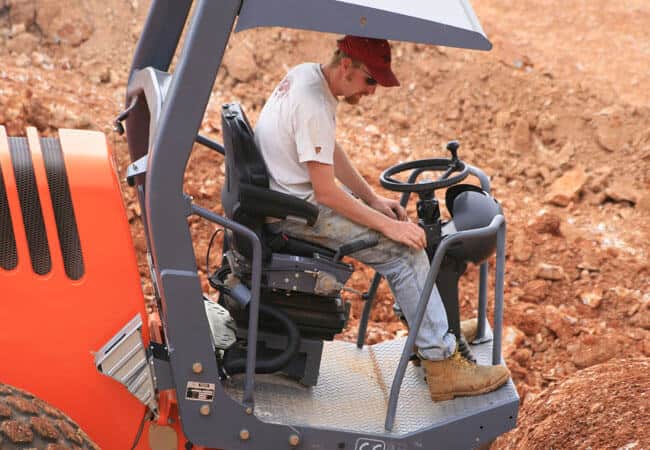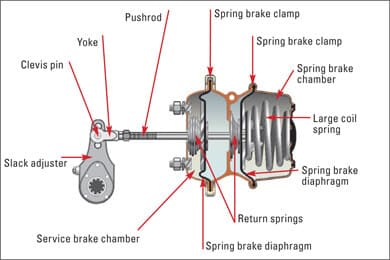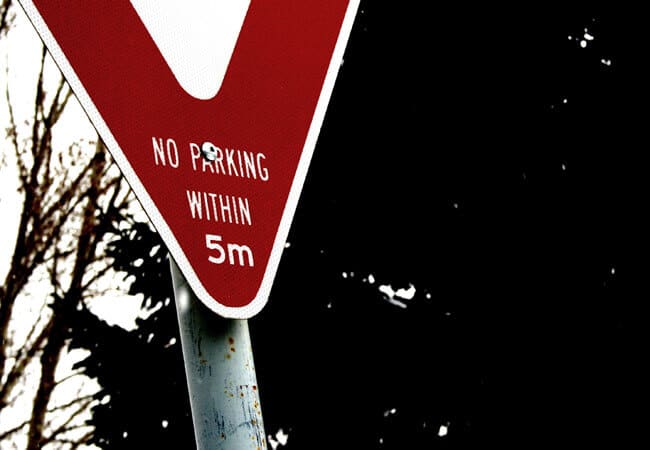America Needs CDL Drivers
In the journey taken by any type of freight that is moved anywhere in North America today, it is likely to travel by truck at some point. The transportation industry is huge, with a requirement for hundreds of thousands of additional professional drivers in the United States, in the coming decade.
There is a shortage of drivers that is not going to go away soon. Right now it is a great time to take up a career in the trucking business as a commercial driver. The demand for so many drivers means that anyone who holds a commercial driver license (CDL) will have little trouble finding employment.

There are many different factors that you need to be aware of before you start on a CDL training course and much that you will have to master to become a professional driver.
This guide will help you get to the truck-driving career that you want. It maps out the goals and objective of a route to CDL careers. You will learn what to expect in your training and also why it is such a great opportunity to become a professional driver. You will learn what to watch out for in the characteristics of a school and why the best bet for a long and satisfying career includes training at a CDL school.
Contents
- 1 America Needs CDL Drivers
- 2 CDL Schools are Preparatory
- 3 Public CDL Training and Private CDL Schools
- 4 Training for the Big Leagues
- 5 Requirements to Become a Professional Driver
- 6 All Part of the Paperwork
- 7 How to Select a CDL School?
- 8 1. Well Defined Curriculum
- 9 2. Transparency in Application Process
- 10 3. Practice Makes Perfect in Passing the CDL Test
- 11 4. Conditions in Classes and on Ranges
- 12 5. Training Vehicles in Good Condition
- 13 6. Lesson Time and Content
- 14 7. Instructors Who Know their Stuff
- 15 8. Ideal Learning Ratios
- 16 9. Getting the Right Outcome
- 17 10. Watch Out For Red Flags
- 18 Are You the CDL Driver America Needs?
CDL Schools are Preparatory
The first thing to understand about commercial driving schools is that they are not in the certification business, they prepare you for your state’s Department of Motor Vehicles (DMV) CDL test.
You are not going to take the test with them and walk away with a diploma that enables you to drive a commercial vehicle in your state. That is the exclusive domain of the DMV.
When you do have the right license for the job you will be able to drive across the United States. The system of licensing for commercial driving is regulated and coordinated from the Federal level, to keep interstate commerce moving along smoothly.
Depending on the type of course you take, you may receive a diploma or even college credits. However, a potential employer is not going to ask what school you attended; they will want to know if you have passed the driving test and that you have met all of the associated background and medical requirements. It is up to the state to make certain that drivers are qualified; if the DMV is satisfied then employers will be too.
There is a large amount of paperwork and regulation surrounding the transportation industry. Restrictions on driving hours and mandatory rest periods make it more difficult for drivers to profit as self-employed business owners.
These rules and laws are meant to ensure safety and best practices. However they are still a burden on drivers and their employers. It may even be one of the causes of the current driver shortage. Ultimately demand for capable drivers will mean that wages will have to increase until enough drivers return to the market. In the mean time, the ongoing and intensifying shortage of drivers is likely to continue.
Public CDL Training and Private CDL Schools
Check with your local vocational-technical school or community college. Some states provide CDL training within the public education system, while other states only have private training resources. Getting trained by the professionals at your local truck driving school is the most expedient way to get a CDL.
You will get the most comprehensive training for the widest range of equipment. They will be the most comprehensive suppliers of knowledge and resources. You can earn a Class A CDL at most schools. You will do so by training with tractor-trailer vehicles, with airbrakes and manual transmissions.
Training for the Big Leagues
There are many private schools throughout the country. Some employers offer driver training and the use of company vehicles to learn to drive and in which to take the test, if it suits their agendas.
The main limitation that employers have, if they train drivers on the job, is that the restrictions of the vehicle they provide will be reflected in the limitation and restrictions placed on your license. That is fine if it is going to be adequate for your career in the long run.
If the vehicle that you will be training on is limited in some way it might still be worth using a CDL school to get a more complete and unrestricted license. A professional driving school will give you the most well rounded experience and training on which to build your future driving career. You will get to test in a vehicle that gives you the least possible restrictions.
As a CDL driver, restrictions do matter. You will not be able to get licensed for anything that has more capabilities than the truck you test in.
If you show up for the driving test in a vehicle that has any combination of a limited weight capacity, automatic transmission or hydraulic brakes, these points will be noted on your license as restrictions; you will not drive beyond that weight limit, drive a truck with manual transmission or one that has airbrakes (pneumatic brakes).
Alternatively, you may be able to get the best of both worlds if you can find an employer that is willing to agree to hire you subject to completion of training and successfully passing the CDL test, before you begin training. That is a real possibility as the demand for drivers is going to remain high for the foreseeable future.
Requirements to Become a Professional Driver
There are federal guidelines for the process to obtain a CDL – to obtain your Class A or B, or if you’re upgrading your license from Class B to A, or getting S (school bus), P (passenger), and H (hazardous materials) endorsements, you are required to take the Entry-Level Driver Training (ELDT). Without the ELDT training, you will not be issued a commercial driver’s license.
Also, check with your home state for the exact process and requirements for obtaining a CDL, as the procedure varies from state to state.
Anyone can learn to be a commercial vehicle driver, subject to being drug-free and reasonably healthy. It does not matter your race or gender. Partly this is common sense that anyone can do it but there are also laws regarding equal employment opportunity for workers in the United States dictating that employers cannot discriminate based on race, religion, age and gender.
All Part of the Paperwork
There is a whole set of hoops that you will be expected to jump through to have the opportunity to earn your first paycheck as a commercial vehicle driver.
Training is just one part of the process. It will however take the largest part of your time, energy and finances to complete and that makes it a critical factor.
Once you have your CDL and a medical card you will be set to begin your new career. Safety is a high priority in the industry, as commercial drivers are responsible for moving very heavy objects at high rates of speed.
Everyone has a stake in a professional driver avoiding accidents or injuries to the public, around which they will be working. The potential for disaster could be devastating and no community wants to have drivers on the road who are unsafe.
Federal laws and state laws are clear and monitoring is mandatory when it comes to chemical dependence and drug usage. Drug testing is a fact of life in the transportation industry.
Once you begin your career you can expect to be drug-tested frequently. Background checks are becoming more detailed as government interest increases and it becomes easier to source information from records, files and databases around the world.
If you attempt to hide something in your past, you may end up with a big disappointment, if your secrets happen to be uncovered. Honesty is always the best policy as many past mistake may be overcome, if you own up to them.
How to Select a CDL School?
1. Well Defined Curriculum
You should get quality classroom training and sufficient practical driving time; you will need both of these aspects of learning to get through the driving test.
The core point of any driving school curriculum has to be the goal of getting students through the written test and then through all of the stages of the driving test and on to gainful employment in the transportation industry.
As they say, you can’t hit a target that you cannot see, so the ideal CDL schools should have a very clearly stated curriculum that lays out the goals and objectives along the way to getting your CDL.
The school should clearly identify:
- Units of instruction
- General purpose and content of each unit of instruction
- Resources that support instruction with training aids, such as video, multi-media, textbooks and simulations.
These should all be appropriate to the ability levels of the trainees and up-to-date editions. Materials should be provided for each individual trainee.
Resource: Training Provider Registry
2. Transparency in Application Process
Some of the general characteristics that you should look for are that there should be enough transparency or openness in the application process or at least published information they are willing to explain and discuss with prospective students.
Do they have clearly stated goals that are relevant to the needs of students and the transportation industry?
The transportation industry is heavily regulated and subject to inspections and licensing restrictions. A professional school should not allow a candidate to pay for and work through any classes if they will not be eligible to take the test.
The admissions procedures should prevent the risk that students could be disqualified on a technicality. To that end, there should be rules that applicants meet all the DOT requirements relating to age, drug screening, physical condition, driving ability and driving record before allowing applicants to join the course.
3. Practice Makes Perfect in Passing the CDL Test
As with all practical skills, accumulated time will increase proficiency in vehicle operation; the more you do the better you get at it. So it is important that you have an adequate amount of instruction.
That does not mean time spent watching others train or observing should count. It should be quality classroom, range and driving time. Training should include instruction on night driving and one hour behind the wheel at night.
However, the length of the training day should not be more than ten hours or more than six consecutive days without a break.
4. Conditions in Classes and on Ranges
There are three areas in which students are going to be training:
- Classroom – Ideally, you want to have a good look around the classroom and range in which you will be training. The classroom needs to be safe, clean and comfortable.
- Outside range (where you’ll be working with the vehicles, but isolated from the road). The range should be separate and protected from hazards posed by other road users. It should be in good condition and free from other vehicles and obstructions. There should not be any obstructions that limit the field of view that the instructor has of trainees in vehicles at any point.
- Highway or Interstate – The highway component of the training should be conducted under a range of conditions to ensure that students experience enough different situations that they may encounter on the highway portion of the test.
5. Training Vehicles in Good Condition
The vehicles used for training should be in good mechanical condition and comply with all state and Federal safety requirements.
Also, they should be of adequate size to qualify trainees on the type of equipment they are likely to encounter in the work place. Ideally, you should be trained on tractor-trailer rigs, with airbrakes and manual transmission.
6. Lesson Time and Content
The total time spent on instruction should be around 160 hours, not including break times if classes are based on a fifty-minute hour.
Each student should receive 104 hours in combined classroom and non-driving time outside. There should be at least 44 hours behind the wheel for each student, including at least twelve hours out on the open road.
During half of that highway driving time the vehicle trailer should be loaded with at least 15,000 pounds of cargo weight.
| Classroom and non-driving | 104 |
| Behind the wheel | 44 |
| Out on the open road | 12 |
| Total | 160 |
Online training and independent study is becoming a larger part of training in every field. There are benefits to using technology based and remote learning; it can save money and allows a high standard of content and students can work at their own pace or study around work schedules of unsociable hours.
This is all well and good as long as the course is not over dependent on it. Independent and online study should not substitute for more than 34 of the 104 hours of class and range instruction.
7. Instructors Who Know their Stuff
The instructors at your prospective CDL School should be fully qualified and knowledgeable about the training curriculum.
They should use lesson plans for each session and provide the students with behind-the-wheel procedures that include safety rules for street driving.
Testing for classwork should be used to assess progress for students relating to the course objectives. Range tests should be in place to determine the level of proficiency on fundamental vehicle control skills and routine driving procedures.
8. Ideal Learning Ratios
The number of instructors, relative to the number of students, is a very effective indicator of the quality of training that you will receive. A CDL school should not have more than thirty students to each instructor (30:1) and the lower this ratio the better it is likely to be for the trainees in the classroom.
On the range, the ratio should be no more than three vehicles per instructor and twelve trainees per instructor.
While trainees are actually driving the vehicle there should not be less than one instructor per vehicle and no more than four trainees in the vehicle.
9. Getting the Right Outcome
One of the very most important conditions has to be that graduation is predicated on successful passing of all parts of the driving test and receiving a commercial driving license. Also there should be career support and follow-up to ensure that students get onto the road as successful commercial drivers.
10. Watch Out For Red Flags
There are a few things that you need to watch out for:
- Prices should not be higher than the low to mid four figures: $2500 to $4500
- Observation time should not be counted as instruction time, you should not have to pay to hang around and just “observe”
Are You the CDL Driver America Needs?
In the coming decade there will be a requirement for many thousands of additional long haul tractor-trailer drivers as well as other specialized drivers. The market for CDL qualified drivers is going to remain strong for the foreseeable future.
It is not for everyone but the variety of available driving jobs mean that if one job is not to your liking there will probably be an alternative CDL position that is more suitable as a career for you.
Becoming a professional driver is one way to build a career that has long-term prospects, where every day is different and work can be an adventure. A CDL is like keys to your truck, once you have it things can really start to move for you, employers will be looking to you to make sure that products get where they are supposed to go. The demand for qualified truckers is not going away any time soon. If you think that this is something in which you want to participate. Find the right school and get trained, licensed and then hit the road.
In Summary
- Some states provide CDL training, in others the only school options are private
- You get a higher level of training in a school than on the job at a company
- Some jobs may hire you before you train, subject to successfully earning your CDL
- Make certain that your CDL school is qualified to get you through the test
- You should receive 160 hours of training, 104 in the class and on the range, the rest on the road
- Online training or independent study should only account for a maximum 34 hours of course time
- Observation time should not count toward instruction time
- The lower the ratio of students to instructors the better it is for quality learning outcomes
- Training vehicles should be in good mechanical condition
- Completion of the school should be dependent on passing the CDL
TruckersTraining.com provide information, tools and resources to potential truck drivers in the U.S. We hope that you can use the content on the site to help you decide if want to drive trucks for a living.









